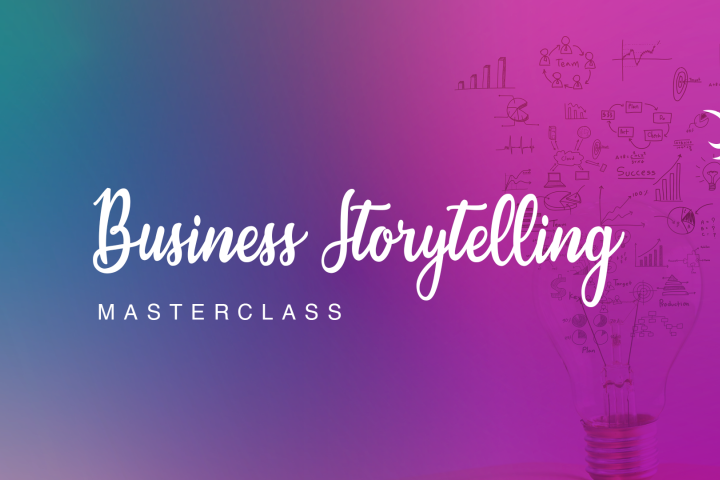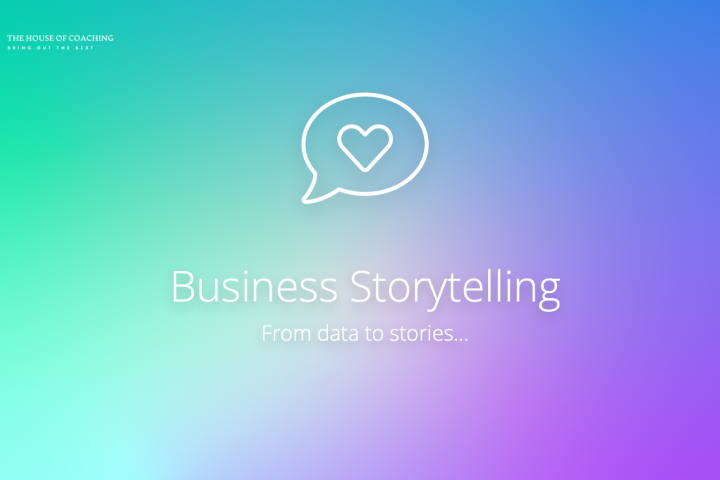Jobs, a master of storytelling, knew exactly how to captivate his audience. He didn't start with technical specifications or sales pitches. Instead, he told a story. He talked about how the iPhone would revolutionise the way we communicate, work and play. He painted a picture of a future where we would no longer be tied to our desks, but would be free to work and communicate anywhere.
Jobs' presentation was a perfect example of the "show, don't tell" principle. He not only showed the audience what the iPhone could do, but also let them feel what it would be like to own one. He used sensory language, created an emotional connection, was authentic and used symbolism and metaphors.
This is the power of storytelling in business. And in this article, we take a closer look at how you, as a manager or executive, can use these techniques to communicate more effectively, both inside and outside your organisation.
Monday Morning Blues...
It's a typical Monday morning. You are in a meeting with your team, or perhaps you are in front of a room full of potential investors. You have a message to share, a vision to put out, an idea to sell. How do you tackle it? How do you make sure your message sticks, that your audience remains captivated, that your idea comes across convincingly? The answer is simple: Storytelling.
But beware, the path of storytelling is littered with pitfalls. Who doesn't remember that one presentation where the speaker got lost in an endless story, with the core message lost in a sea of details? Or that time when a story was so exaggerated that it lost credibility? We have all experienced a 'story nightmare' at one time or another.
How well-known business leaders use effective storytelling techniques.
Steve Jobs, co-founder of Apple, was a master at using storytelling to sell his products. He used sensory language and symbolism to describe his products, and created emotional connection by talking about how these products would change people's lives.
Oprah Winfrey, as a media mogul and former talk show host, has built her career on telling and sharing stories. She uses personal anecdotes and experiences to create an emotional connection with her audience and to make complex topics accessible and understandable.
Satya Nadella, the CEO of Microsoft, uses storytelling to transform the company's culture and strategy. He shares stories about Microsoft's transformation into a more open and inclusive organisation, and uses these stories to communicate his vision for the company's future.
Howard Schultz, the former CEO of Starbucks, is a master at using symbolism and metaphors in his storytelling. He describes Starbucks not just as a coffee company, but as a "third place" between work and home. This metaphor helps create a clear and powerful picture of what makes Starbucks unique and how it stands out from other coffee companies.
Five simple principles
From this we distil the five principles of effective Business Storytelling:
Show, don't tell
This principle reminds us that it is more powerful to show situations and emotions than to tell them. Instead of saying "our company is innovative", tell a story about how your team solved a complex problem with a creative solution.
Richard Branson, founder of the Virgin Group, is a master of showing rather than telling. Instead of simply saying his companies are innovative and customer-centric, he shares stories of how his teams take on new challenges and rise above expectations to surprise customers.
Use sensory language
By using sensory language, you can paint a vivid and compelling picture. Describe how things look, sound, feel, smell and taste to draw your audience into the story.
Elon Musk, CEO of SpaceX and Tesla, often uses sensory language in his presentations. When unveiling the Tesla Model S, he described not only the technical specifications, but also what it feels like to sit behind the wheel and drive the car.
Care for emotional connection
People are emotional creatures and respond strongly to stories that evoke emotions. Make your story relevant to your audience by showing how it touches them on a personal level.
Jef Colruyt often uses emotional connection in his communications. He shares personal stories and experiences, such as his commitment to sustainability that started when he was a child, to create an emotional connection with his audience.
Be authentic
Authenticity creates trust and credibility. Be honest and open in your story. Show your true self, with all your strengths and weaknesses.
Annemarie van Gaal is known for her authentic and transparent communication style. She has often spoken about the importance of financial independence and openly shares the challenges and successes of her own career.
Make use of symbolism and metaphors
Symbols and metaphors can simplify complex ideas and make your story more powerful. They can also help add deeper meaning and context to your story.
Inge Geerdens, founder and CEO of CVWarehouse, often uses symbolism and metaphors in her communications. She often describes CVWarehouse as a "bridge" between job seekers and companies, and her role as CEO is to build and maintain that bridge. This metaphor helps to communicate her vision and strategy for the company in a clear and powerful way.
Now that we know the principles, here are seven concrete tips to become an effective communicator thanks to Business Storytelling:
Start with a strong opening
The first few minutes of your story are crucial to grabbing your audience's attention. Start with an intriguing question, a surprising fact, or an engaging anecdote. This will make your audience curious and motivate them to keep listening. Think of Steve Jobs starting his iPhone presentation with "Today we are going to reinvent the phone." That's an opening that grabs attention!
Use a clear structure
A good story has a clear and logical structure. It has a beginning, a middle and an end. The beginning introduces the problem or challenge, the middle presents the journey to the solution, and the end reveals the solution and lessons learned. This structure helps your audience follow your story and remember the main points.
Tim Cook, Apple's current CEO is known for his methodical and organised approach, presenting complex ideas and strategies in a structured and understandable way.
Use tension arcs
To hold your audience's attention, it is important to build tension and anticipation in your story. This can be achieved by introducing conflicts, challenges or obstacles to overcome. These tension arcs will keep your audience on the edge of their seats, curious to see how the story will unfold. Think of Steve Jobs' presentations, in which he would often 'tease' new products or features before fully unveiling them, building up the audience's anticipation and excitement.
Make it personal
People love personal stories. They help create an emotional connection and make your story relatable. Share your own experiences and lessons, or the experiences of people you know. This will make your story more authentic and engaging. Oprah Winfrey is a master at sharing personal stories that resonate with her audience.
Connect with your audience
Engage your audience as much as possible by including interactive elements in your presentation. This could be asking questions, conducting polls, or encouraging discussion. By actively involving your audience in your presentation, they will feel more engaged and invested in your story. Oprah Winfrey is known for her ability to make deep connections with her audience, both in her talk show and in her speeches. She often asks questions, shares personal anecdotes and encourages her audience to share their own experiences and insights.
Use repetition for key points
Repetition is a powerful tool to emphasise your key points and make sure they stick. Think of Martin Luther King Jr's "I Have a Dream" speech, in which he repeated the phrase "I have a dream" eight times to emphasise his vision for equality.
End with a strong call-to-action
After sharing your story, you want your audience to take action. This could be buying your product, supporting your idea, or changing their behaviour. Make your call-to-action clear, specific and compelling. Howard Schultz, for example, often ends his presentations with a call to action to visit Starbucks and experience the 'third place' experience for yourself.
Are you ready to take your communication skills to the next level? Do you want to fully harness the power of Business Storytelling? Then sign up for our MasterClass Business Storytelling. In this intensive workshop, you will learn how to use storytelling to effectively convey your message, captivate your audience and sell your ideas.
Many of us remember the moment when Steve Jobs, dressed in his signature black turtleneck, took the stage in 2007 and introduced the world to the iPhone. With an air of excitement and mystery, he began his presentation by saying:
"Today we are going to make history..."


